Jan Bartek – AncientPages.com – The year 2023 has been successful for archaeologists working in different parts of the world. Scientists have discovered long-lost ancient structures, incredible shipwrecks with intact cargo, beautiful ancient artifacts, and much more. In this top list, we present ten fascinating archaeological discoveries that were unearthed in 2023.
1. Ancient Roman Shipwreck Marausa 2 With Intact Cargo Recovered Off The Coast Of Sicily
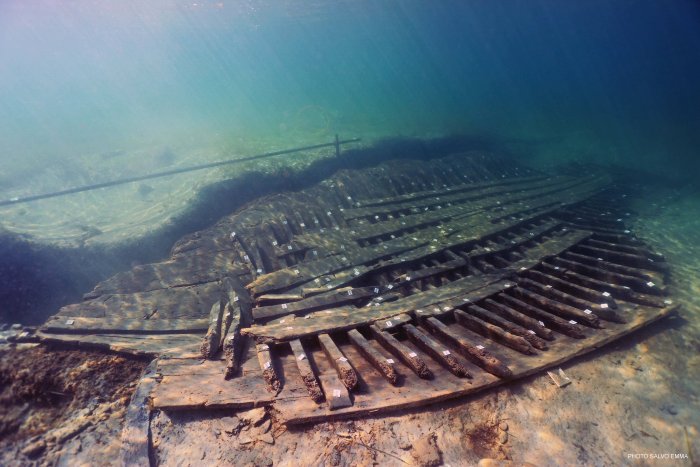
Roman ship Marausa 2 was recovered off the coast of Sicily. Credit: Salvo Emma
A large Roman commercial transport ship filled with ancient artifacts has been recovered off the coast of Sicily. Even after 1,700 years, the preservation state has been described as “astonishing,” and the cargo is intact.
The 11-meter-long Roman commercial transport ship was discovered after a diver reported the presence of amphora fragments and wooden remains just 100 meters from the shore. After an initial survey, which allowed scientists to understand the importance of the discovery, the Superintendence of the Sea took steps to secure the site by covering it with over 100 bags filled with sand.
. Raising the entire ship was possible because the timbers were still well-preserved. The cargo of amphorae and other artifacts are still intact and stored inside.
All artifacts and the shipwreck were transferred to the Baglio Anselmi Museum in Marsala for initial restoration and conservation work.
The restoration work will take years to finish. Still, once it has been completed, this remarkable archaeological underwater discovery will be on permanent display, allowing the public to learn more about the ancient history of this region. Read more here
2. Extremely Rare Roman Cavalry Parade Mask Discovered In Romania
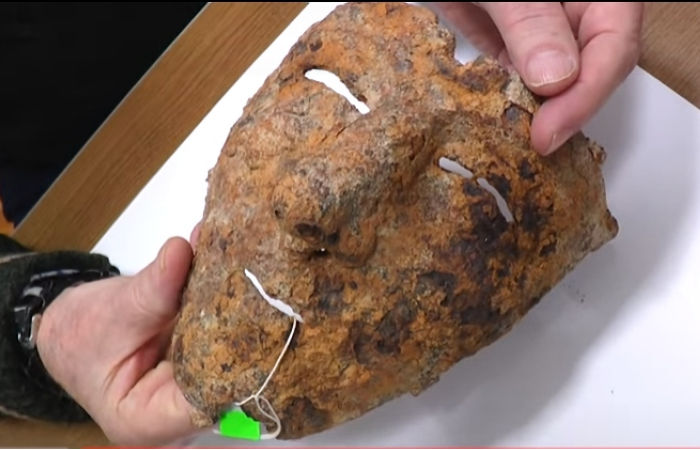
Credit: Gorj County Museum
An amateur archaeologist in Romania has discovered a unique ancient Roman parade mask. Roman-era iron masks are rare, making this a unique find. So far, only bronze Roman masks have been discovered in the country.
Using a metal detector, Betej Gabriel unearthed the ancient Roman mask in Albeni, a commune in Gorj County. The iron mask most likely belonged to a Roman soldier stationed there. Archaeologist Gheorghe Calotoiu states that Roman soldiers used such masks in various combat exercises or celebrations. He added that Roman soldiers wore such masks and helmets during the parades in which they participated. Read more here
3. 3,000-Year-Old Shoe Found On A Beach In Kent, UK
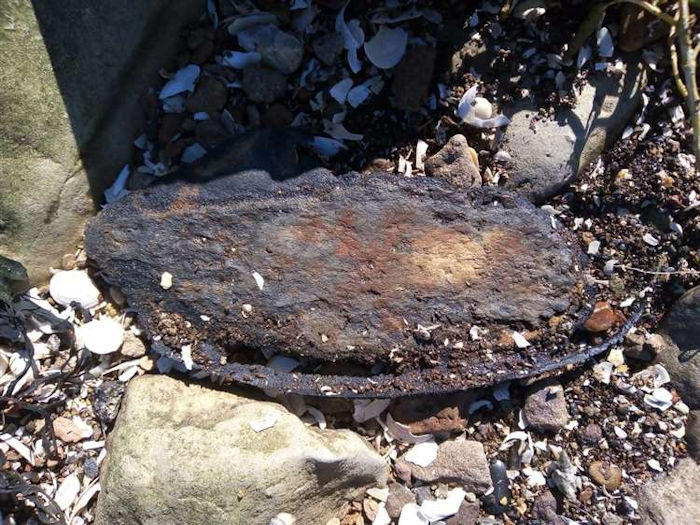
The shoe as it was found on a foreshore in North Kent. Credit: Steve Tomlinson
Britain’s oldest shoe has been found on a beach in Kent. The shoe, made of leather, is 3,000 years old and was discovered by archaeologist Steve Tomlinson.
When Tomlinson found the shoe, he did not think it was special, but he sent it for carbon dating at an East Kilbride, Scotland unit. Five weeks later, he received a reply stating the shoe was from the late Bronze Age. Read more here
4. Intact 2,600-Year-Old Etruscan Tomb Opened In Vulci- Exceptionally Rare Artifacts Found Inside
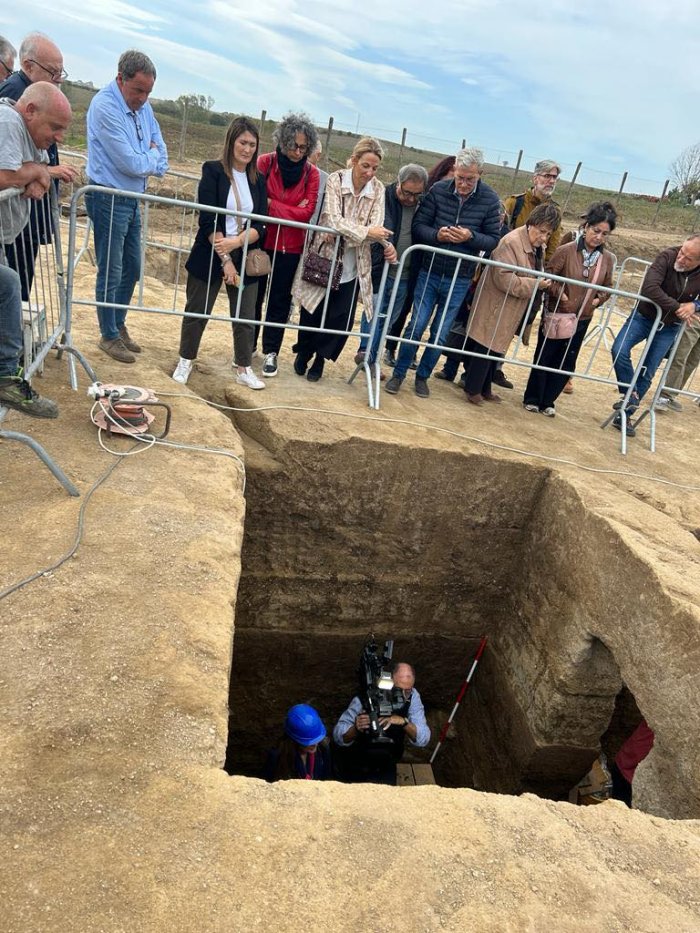
Investigation of the Etruscan tomb 58. Credit: Municipality of Montalto di Castro
Archaeologists have opened an Etruscan tomb that has remained sealed for about 2,600 years. The double-chambered tomb located in the Osteria necropolis in Vulci, a rich Etruscan city in what is now northern Lazio, central Italy, is intact and contains extremely rare remains and artifacts.
Designated tomb 58, the ancient burial was discovered in April this year. The same month, a similar tomb was opened in the necropolis. The Vulci Foundation excavation campaign is being conducted by the Soprintendenza Archeologia, Belle Arti e Paesaggio, for the province of Viterbo and southern Etruria.
A decision was made to open the very large double chamber. Getting inside was not an easy task, though, because multiple slabs of tufa blocked its entrance. Read more here
5. Rare And Tiny Ancient Stamps Found In Falster May Show The Way To An Unknown King’s Home
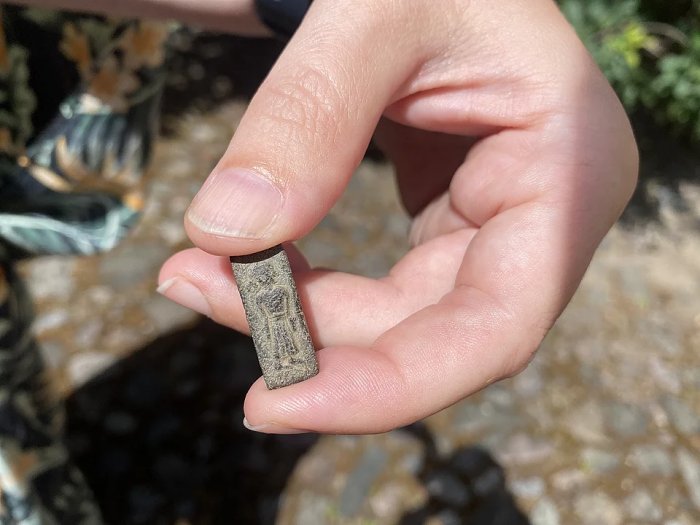
The small figure is most reminiscent of a hieroglyph from Egypt. However, Egyptian works of art are much older. PH๏τo: Museum Lolland Falster
A metal detectorist in Denmark has made an intriguing archaeological find. While being out on a rainy day and searching for anything of historical value, he suddenly heard a faint beep on his equipment. When Lennart Larsen checked the soil, he discovered tiny, curious objects that were unlike anything he had seen before. Larsen could not determine what the objects were, but they appeared old.
The Museum Lolland-Falster has been informed but does not want to reveal the location of the find as there may be more archaeological objects at the site.
According to experts, the objects discovered by Larsen suggest was once a large settlement where a great man or early king lived. Read more here
6. Remarkable Discovery Of A 19th-Century Boat Buried Under A Road In St. Augustine, Florida
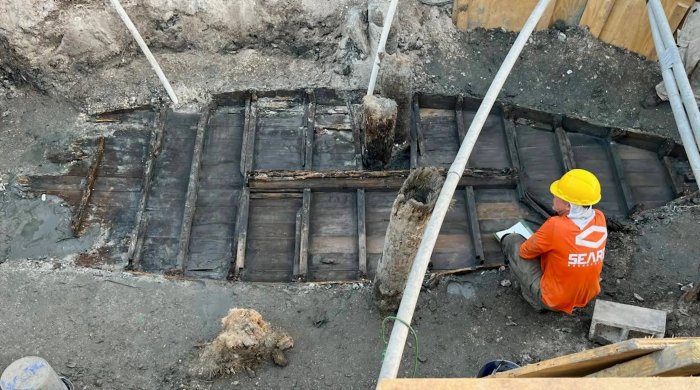
Crews painstakingly removed mud, layer by layer, to expose a historic vessel unearthed during a drainage construction project in St. Augustine. Credit: Florida Department of Transportation, District Two
The boat is not ancient, but the discovery is truly incredible. While working on a drainage problem to ease the flooding problem in the area, construction workers discovered a nearly intact, wooden 19th-century boat hidden under a road in St. Augustine, Florida, US.
Archaeologists from SEARCH Inc. (Southeastern Archaeological Research) were called to the site to investigate, and excavations of the vessel buried 8 feet below the ground started.
The fishing boat was found on State Road A1A near the Bridge of Lions in the city known as the “oldest continuously occupied settlement of European and African-American origin. Read more here
7. World’s Oldest Wooden Structure Discovered And It Predates Homo Sapiens – Archaeologists Say
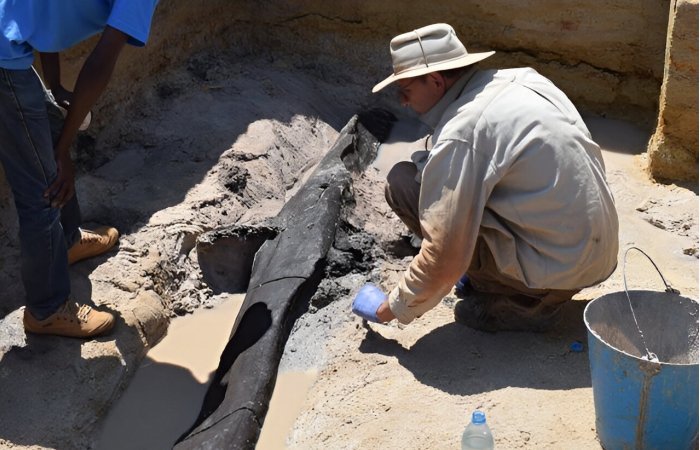
Professor Larry Barham (pictured, right) uncovering the wooden structure on the banks of the river with a fine spray. Credit: Professor Geoff Duller, Aberystwyth University
Half a million years ago, earlier than was previously thought possible, humans were building structures made of wood, according to new research by a team from the University of Liverpool and Aberystwyth University.
The research reports on the excavation of well-preserved wood at the archaeological site of Kalambo Falls, Zambia, dating back at least 476,000 years and predating the evolution of our own species, Homo sapiens.
Expert analysis of stone tool cut-marks on the wood show that these early humans shaped and joined two large logs to make a structure, probably the foundation of a platform or part of a dwelling.
This is the earliest evidence from anywhere in the world of the deliberate crafting of logs to fit together. Until now, evidence for the human use of wood was limited to its use for making fire, digging sticks and spears. Read more here
8. Remarkably Well-Preserved 2,500-Year-Old Canoe Discovered In Swiss Lake
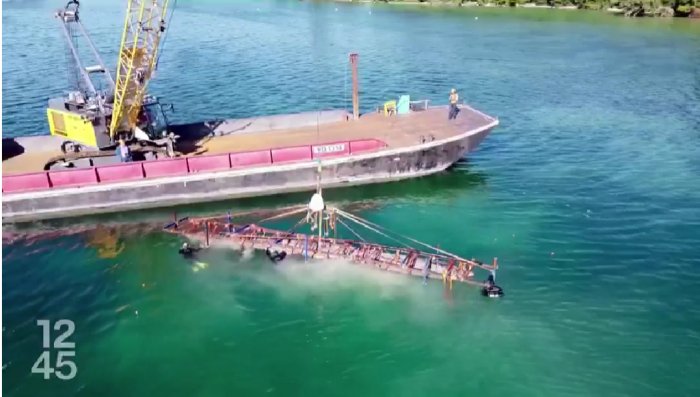
After months of careful preparation, scientists could lift the canoe and pull it out of the lake. Credit: rts.ch
Archaeologists have discovered a remarkably well-preserved dugout canoe from the Early Iron Age in Lake Neuchâtel in western Switzerland.
According to the Vaud canton’s archaeology department, the 13-meter-long canoe was resting at a depth of 3.5 meters on a sandbank on the north shore of the lake.
Experts ᴀssisted the cantonal archaeologists in underwater salvage techniques. This delicate operation required many months of preparation.
“This is an archaeological discovery of considerable importance for our understanding of the prehistory of the region. It is one of the very few boats from this period in Switzerland that has been preserved almost in its entirety,” said cantonal archaeologist Nicole Pousaz at the press conference. Read more here
9. Four Rare And Incredibly Well-Preserved 1,900-Year-Old Roman Swords Found In Judean Desert
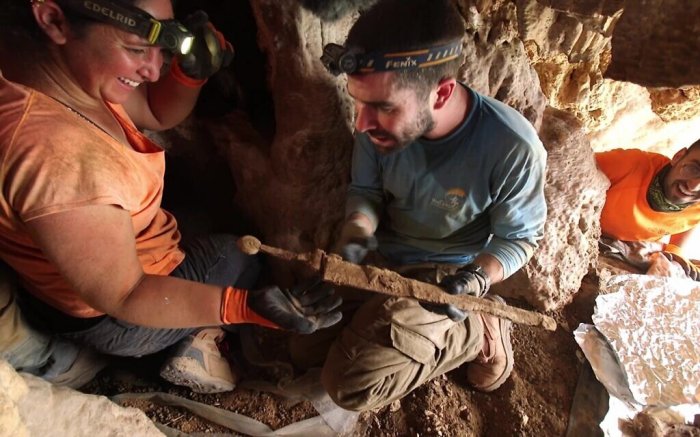
Archaeologists remove the swords from the rock crevice where they were hidden some 1,900 years ago in a cave in the Judean Desert. Credit:Emil Aladjem/IAA
Archaeologists report having discovered four incredibly well-preserved Roman swords in the Judean Desert.
This very rare find was made in a small hidden cave located in an area of isolated and inaccessible cliffs north of ‘En Gedi, in the Judean Desert Nature Reserve, under the jurisdiction of the National Parks Authority. Fifty years ago, a stalacтιтe with a fragmentary ink inscription written in ancient Hebrew script, characteristic of the First Temple period, was found. Read more here
10. Unique 2,000-Year-Old Decorated Roman Sandal Lost By Well-Cleaner Found In Spain
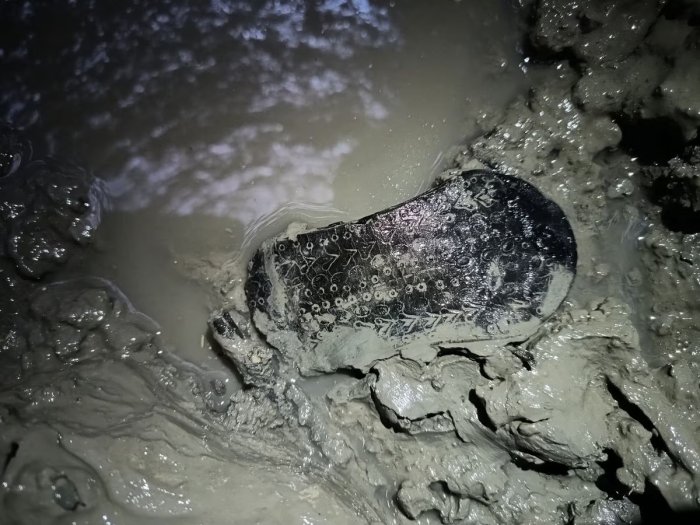
The Roman sandal discovered in Lugo de Llanera, Asturias. Credit: Esperanza Martín
bout 2,000 years ago, a Roman man tried to clean a well and lost a sandal. The well-preserved ancient shoe was discovered during archaeological excavations at Lucus Asturum (modern-day Lugo de Llanera in Asturias, northern Spain).
Mentioned by astronomer, mathematician, and geographer Ptolemy in his work Geography Lucus Asturum was a Roman settlement that served as an administrative center and communications hub in the north of the Iberian Peninsula between the first and fourth centuries A.D. between the first and fourth centuries A.D. Read more here
In this article, we have only presented a small number of all the incredible archaeological discoveries made in 2023. You will find much more in our archaeology section.
Written by Jan Bartek – AncientPages.com Staff Writer





